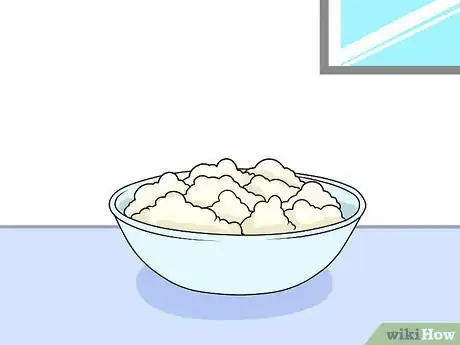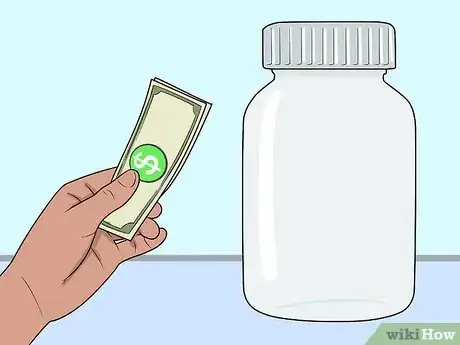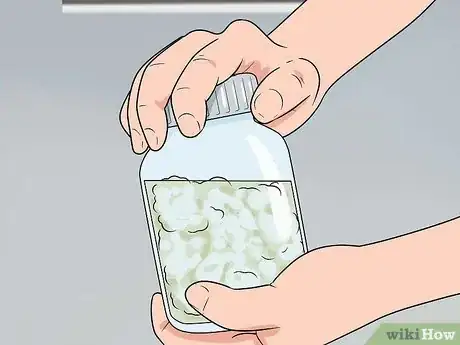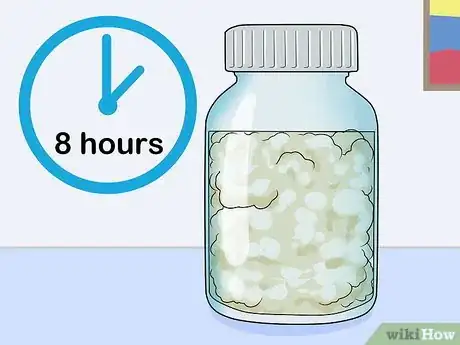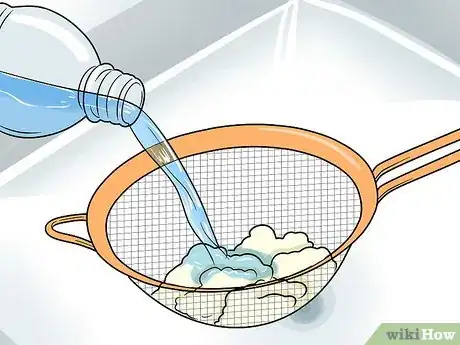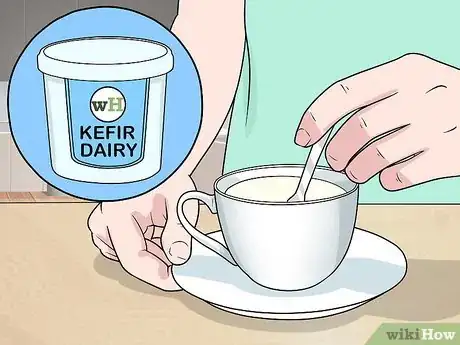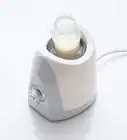wikiHow is a “wiki,” similar to Wikipedia, which means that many of our articles are co-written by multiple authors. To create this article, 11 people, some anonymous, worked to edit and improve it over time.
wikiHow marks an article as reader-approved once it receives enough positive feedback. In this case, 97% of readers who voted found the article helpful, earning it our reader-approved status.
This article has been viewed 85,753 times.
Learn more...
Kefir is a fermented beverage that can be made with cow or goat milk, water or coconut milk. Much like yogurt, it is rich in healthy yeast and bacteria, but kefir contains several major strains of friendly bacteria not commonly found in yogurt. Because the curd size of kefir is more fine-grained than yogurt, it is also easier to digest. In addition to beneficial bacteria and yeast, kefir contains essential amino acids, complete proteins and an abundance of minerals.
Steps
Gathering Supplies to Make Kefir
-
1Get kefir seeds. Kefir seeds are available online or in health food stores. Kefir seeds reproduce on their own, so one starter batch can last years and years. You can also divide clumps of kefir seeds and give some to friends. Like sourdough, the kefir will simply reproduce, so you'll never run out.
- Kefir seeds can be either frozen or dried if you want to store them.[1]
- If you expose the kefir seeds to a chemical or extreme temperatures, they can die.
-
2Buy a jar to use for kefir. If you get into the daily habit of making kefir, it's worth picking out a jar that's just the right size for your needs. For an average amount of kefir, use a quart-sized mason jar. Kefir needs a breathable lid, which you can create using a coffee filter and a mason jar lid ring.
- Don't use a plastic container, since the molecules can leach into the kefir.
- If you wish, sterilize the jar before using it by boiling it for five minutes, then draining it on a clear paper towel.
Advertisement -
3Pick out a kefir base. Kefir is usually made with whole milk. Using full-fat milk gives the kefir a tangy flavor and a yogurt-like texture, making it great to drink by itself or use in smoothies and recipes. For an even thicker kefir, add some cream. If you'd prefer not to drink cow milk, try these alternatives:
- Water. You can make a fermented water-based drink with kefir to get its nutritional benefits. Make sure you use purified water, though - tap water contains chemicals that can kill kefir.
- Goat's milk. The human body is able to digest goat's milk more easily than cow's milk, so this is a good alternative if you're lactose intolerant.
- Coconut milk. Kefir-fermented coconut milk makes a great base for fruity, healthy drinks. Use the purest coconut milk you can find, with no additives or sugars. If possible, make your own coconut milk to use. Grains won't reproduce in coconut milk, so you will have to return them to a dairy base when you're finished making this type of kefir.
Making Kefir
-
1Put 2 tablespoons of kefir grains into a clean glass jar. This is a good amount of kefir grains to start with, as it will produce a nice average kefir flavor. As you get into the practice of making kefir, experiment with adding more seeds or fewer seeds. You'll see the the amount of seeds you use really affects the flavor, and it's all a matter of personal preference.[2]
-
2Pour 2 1/2 cups of milk into the jar. Again, the amount of milk you use in relation to the kefir is a matter of preference, but 2 1/2 cups is a good place to start. Don't fill the far all the way to the top, since the mixture needs room to breathe during the fermentation process; you should keep it about 2/3 full.
-
3Cover the jar and store it at room temperature. Designate a spot on the counter or in your cabinet to store the kefir. If you put it in the refrigerator the fermentation process won't take place.
-
4Let it ferment for 8 hours. The fermentation process takes several hours, so the easiest thing to do is prepare the kefir seeds and milk at night and use it in the morning. The longer you let the seeds do their work, the more tangy the kefir will taste and the thicker it will get.
- If you prefer less flavorful kefir, you can use it after 5 hours or so instead of waiting all night.
- Coconut kefir takes longer to ferment. You may have to let it sit for longer than 8 hours.
-
5Strain the kefir. Place a piece of cheesecloth or a fine-mesh strainer over a second jar or a bowl. Pour the kefir from the original jar through the cheesecloth, separating the kefir seeds from the liquid. The kefir is now ready to drink or store in the refrigerator.
-
6Rinse the seeds and start again. Rinse the seeds in distilled water (never tap water). Place them in a clean jar, fill it with milk, and start the process over. If you're not yet ready for a second batch of kefir, you can rest the kefir by placing the seeds in a jar, adding milk, and letting it sit for a week before straining.
Using Kefir
-
1Use dairy kefir in place of milk. Any time you'd normally use milk or yogurt for a meal or in your cooking, substitute kefir. Kefir makes an excellent base for sauces, and it can even be used in baking as a healthier dairy substitute. Consider these options:[3]
- Eat kefir with granola for breakfast.
- Stir kefir into your coffee.
- Make a yogurt grapefruit cake with kefir instead of yogurt.
-
2Eat coconut kefir as a refreshing treat. Coconut kefir can't always be used as a direct substitute for milk in recipes, but it has a variety of other wonderful uses, and is especially delicious when enjoyed plain. Try these ideas:
- Make a coconut kefir smoothie by blending a cup of kefir, a banana, and a handful of berries.
- Use coconut kefir as the base for a homemade pina colada.
- Stir coconut kefir into soups and sauces to make them thick, rich and creamy.
-
3Drink water kefir to hydrate during the day. Water kefir is much lighter than other types of kefir, so you might find yourself drinking it all day long. Use it whenever you'd normally use water in recipes for soup. You can also flavor water kefir with fruit juice, mint, or other flavorings to make a tasty drink.
Community Q&A
-
QuestionDoes light milk work just as well as full cream or does it take longer?
 Community AnswerIt works the same.
Community AnswerIt works the same. -
QuestionShould I warm the milk to make a new batch of kefir or use cold milk?
 Community AnswerI use milk straight from the refrigerator. It does not harm the kefir. The milk warms up to room temperature and soon one has fresh kefir.
Community AnswerI use milk straight from the refrigerator. It does not harm the kefir. The milk warms up to room temperature and soon one has fresh kefir. -
QuestionIs it okay if my kefir separates?
 Community AnswerYes, that is okay.
Community AnswerYes, that is okay.
Things You'll Need
- Glass container with a lid
- Kefir seeds
- Milk, water or coconut milk
- Cheesecloth or fine-mesh strainer
References
About This Article
To make kefir, begin by putting 2 tablespoons of kefir grains into a glass before adding 2.5 cups of milk. Use whole milk if you'd prefer a tangy flavor or skimmed milk for something lighter. Then, cover the jar and store it at room temperature for 8 hours before eating, or 5 hours if you don't want the flavor to be too strong. Next, put a piece of cheese cloth over another jar and strain the kefir, which you can now drink. If you want to make more, rinse the seeds in distilled water and repeat the process. For tips on how to use your kefir, scroll down!
